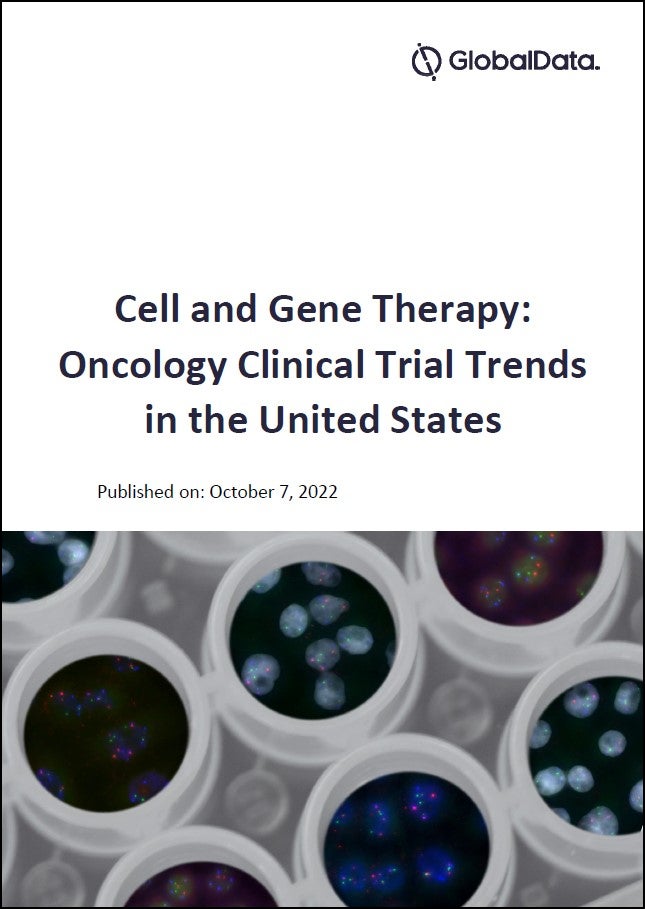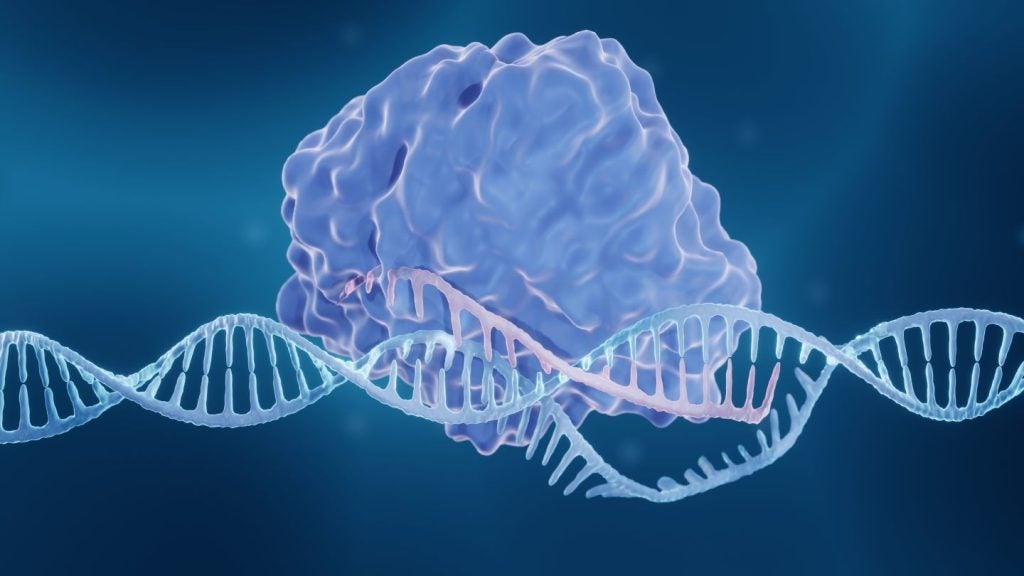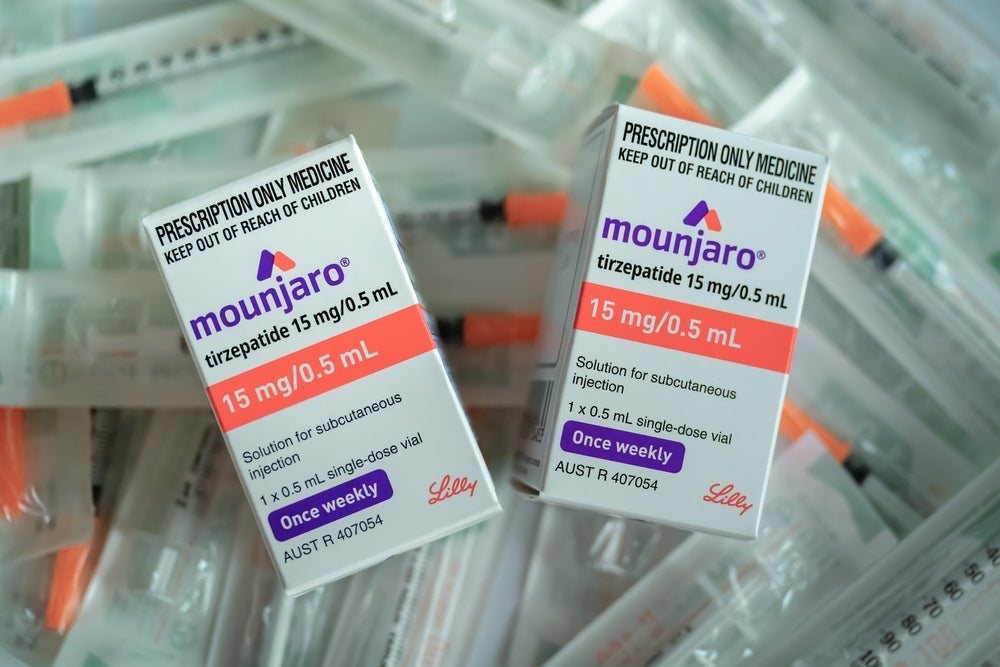KRAS inhibitor pharmacokinetic (PK) differences between Amgen’s AMG510 and Mirati Therapeutics’ MRTX849, both in Phase I/II in solid tumours, are unlikely to allow for the latter to have superior efficacy data.
This is in contrast to analyst forecasts — released after Amgen’s data release at the American Society of Clinical Oncology (ASCO) annual meeting in Chicago, Illinois — that state an even greater efficacy potential for MRTX849 based on PK data variances.
How well do you really know your competitors?
Access the most comprehensive Company Profiles on the market, powered by GlobalData. Save hours of research. Gain competitive edge.

Thank you!
Your download email will arrive shortly
Not ready to buy yet? Download a free sample
We are confident about the unique quality of our Company Profiles. However, we want you to make the most beneficial decision for your business, so we offer a free sample that you can download by submitting the below form
By GlobalDataOncology KRAS inhibitors
Mirati has yet to provide any clinical trial data for MRTX849 and so any comparison is premature. While AMG510 may have a shorter half-life than MRTX849, this may not be relevant because both small molecules are irreversible inhibitors, where half-life may matter for efficacy more if the therapy/target bond were temporary. An analyst report states there could also be value in the MRTX849 trial not allowing the enrollment of patients with other known oncogenes but experts said this may be moot considering KRAS is the most important oncogenic trigger in all these patient groups and unlikely to be significantly influenced by other oncogenes.
Proof-of-concept data from the 200-patient, open-label Phase I/II MRTX849 trial (NCT03785249) is expected 2H19, as per a second analyst report.
It was reported on 7 June that Amgen’s stock rose by 1.2% on 15 May and 6% on 3 June on the heels of positive Phase I AMG510 efficacy data in non-small cell lung cancer (NSCLC), albeit poor data in colorectal cancer (CRC). Mirati, Amgen’s leading competitor, also experienced a stock bump of 15.6% and 42.8% on the same days due to the positive AMG510 data sentiment.
Amgen’s market capitalisation is $107 billion, while Mirati’s market capitalisation is $3.6 billion. Mirati did not respond to a request for comment.
Meanwhile, one expert noted another way to target KRAS is via an antisense oligonucleotide approach, as done by Cambridge, Massachusetts-based company Codiak BioSciences, which could potentially target more types of KRAS mutants. KRAS is a gene that acts as an on/off switch in cell signalling. When it functions normally, it controls cell proliferation. When it is mutated, negative signalling is disrupted.
But some experts agreed it is unclear if targeting all KRAS mutants would be clinically relevant and that this approach requires a more sophisticated delivery mechanism compared with small molecules. Also, reducing KRAS activity to a 10% rate may be a specific target required with an antisense oligo approach, and this reduction could be challenging to achieve due to the nature of the KRAS target, another expert added.
Codiak, which has a KRAS-targeting engEX platform planned for clinical trial development, is aiming for a $86 million initial public offering (IPO), media reports show. The company did not respond to a request to comment.
PK difference may be irrelevant for irreversible inhibition
All experts agreed MRTX849 clinical data is needed and so it may be too early to compare AMG510 and MRTX849. Still, the first analyst report states MRTX849 may have a more favourable half-life of 20 hours versus six hours seen with AMG510 and could be an efficacy differentiator.
This half-life difference though may be irrelevant for efficacy due to the nature of the KRAS G12C target, said Dr Ronald DePinho, professor at the department of cancer biology at the University of Texas MD Anderson Cancer Center, Houston, and AMG510 investigator Dr Marwan Fakih, professor at City of Hope Comprehensive Cancer Center, Duarte, California. Once either small molecule therapy binds to its KRAS G12C target, there is an irreversible bond, both experts explained. This means that even if one of these therapies has a shorter half-life, the actual engagement is irreversible, where half-life may matter more if the engagement is temporary, DePinho added.
The KRAS protein also has a 24-hour turnover, Fakih said. And so, with AMG510 dosed once a day, increasing this to twice or three times a day to compensate for its shorter half-life compared with MRTX849 might be redundant as a once-daily dose would be enough relative to the KRAS G12C that needed to be inhibited, Fakih added. In preclinical models, exposures for the 960mg/day AMG510 dose exceed thresholds for maximal target inhibition, and it does so for more than 24 hours, said an Amgen spokeswoman, adding the company will continue to explore additional dosing regimens as the programme matures.
In KRAS G12C the “C” stands for cysteine, DePinho explained. The irreversible inhibitors form a chemical bond that locks KRAS G12C into its guanosine biphosphate state, he added. This is relevant because this blocks the activation and proliferation of cancer cells, Fakih added. The first analyst report noted that the MRTX849 trial does not allow enrolment for patients with other known oncogenes, and so could lead to even better results than AMG510’s ASCO data.
But barring patients with other oncogenes may not lead to a notable advantage to demonstrate efficacy, Fakih said. KRAS G12C is already a very important driver of cancer to the point that further zeroing in on a smaller patient subpopulation within KRAS G12C-positive patients may not lead to reaching a higher efficacy rate, Fakih explained. That said, the AMG510 trial is collecting all tissues in all patients to look into potential oncogenes relevant in targeting KRAS G12C, Fakih said.
Amgen believes due to AMG510’s high selectivity for KRAS G12C, it has high potential as both a monotherapy and in combination with other targeted and immune therapies, the Amgen spokeswoman said.
Nonetheless, there could still be different binding capacities between AMG510 and MRTX849 based on their different structures, that could lead to different efficacy profiles, noted Dr Timothy Yap, associate professor at the Department of Investigational Cancer Therapeutics at the University of Texas MD Anderson Cancer Center, Houston. But still, more data is needed to confirm the value of these differences, Yap said.
The AMG510 trial’s primary endpoint is also investigating safety so excluding too many patients may not be ideal to investigate this therapy’s safety profile, Fakih added. According to the website ClinicalTrials.org, the AMG510 trial only recruits pathologically documented, locally advanced or metastatic malignancy with KRAS G12C mutation identified through DNA sequencing.
Although both Amgen and Mirati compounds have the same targets, their compositions may be different and thus their potential side effects may be different, added Dr Conan Kinsey, physician-scientist at the Department of Internal Medicine at the University of Utah, Salt Lake City. It is reassuring both therapies target the mutant forms of KRAS G12C, reducing the likelihood of off-target effects, Kinsey added.
Antisense oligo mechanism can target more, but unclear relevance
The other approach in targeting KRAS is an antisense oligonucleotide approach, which potentially targets all mutant KRAS—like G12C and G12D—simultaneously, DePinho added. There are non-KRAS G12C approaches that need exploring, especially since this may be relevant in CRC, added Dr Sai-Hong Ignatius Ou, health science clinical professor at the School of Medicine, University of California, Irvine.
Data revealed at ASCO only supports the idea that AMG510 can target KRAS G12C and no other mutations, Fakih added. Mutations like KRAS G12D are harder to target with a small molecule approach like AMG510 because a chemical bond is harder to establish, and so KRAS G12D may be more amenable to an antisense oligonucleotide mechanism, DePinho explained. However, it is unclear if targeting all types of KRAS mutations would be clinically relevant, Kinsey said. In pancreatic cancer, targeting both KRAS G12C and G12D can lead to potentially little clinical difference, Kinsey said.
Meanwhile, an antisense oligonucleotide approach may need a more sophisticated delivery mechanism to ensure the oligonucleotide reaches the cancer cell, DePinho said. This is in contrast to a notable advantage of small molecules, where the molecule can easily target every cell that has the mutant KRAS G12C, DePinho explained.
One potential way to overcome this antisense oligonucleotide shortcoming is the delivery mechanism adapted by Codiak, where it is investigating exosomes to package the RNA that targets mutant KRAS, DePinho said. He added there is preclinical data supporting this approach where in pancreatic cancer models it was shown it could prolong survival rates. See, Kamerkar, S, et. al, Nature. 2017 Jun 22;546(7659):498-503.
But still, Kinsey said the advantage of the small molecule approach is that it binds to its target and it has already achieved its mechanism. In contrast, an antisense oligonucleotide approach may need specific efficacy targets, like reducing KRAS activity rates to below 10% for efficacy, Kinsey said, adding it can be challenging to get to those low levels as it is already considered an “undruggable” target to begin with.
Also, there is not much precedent for the antisense oligonucleotide approach in any indication compared with a small molecule mechanism, which draws overall efficacy reservations for the former approach, Kinsey added.
by Reynald Castaneda in London and Manasi Vaidya in New York
Reynald Castaneda and Manasi Vaidya are Senior Reporters for Pharmaceutical Technology parent company GlobalData’s investigative journalism team. A version of this article originally appeared on the Insights module of GlobalData’s Pharmaceutical Intelligence Center. To access more articles like this, visit GlobalData.











Related Company Profiles
City of Hope Comprehensive Cancer Center
University of Utah
Codiak BioSciences Inc
University of California Irvine
Insights Co Ltd